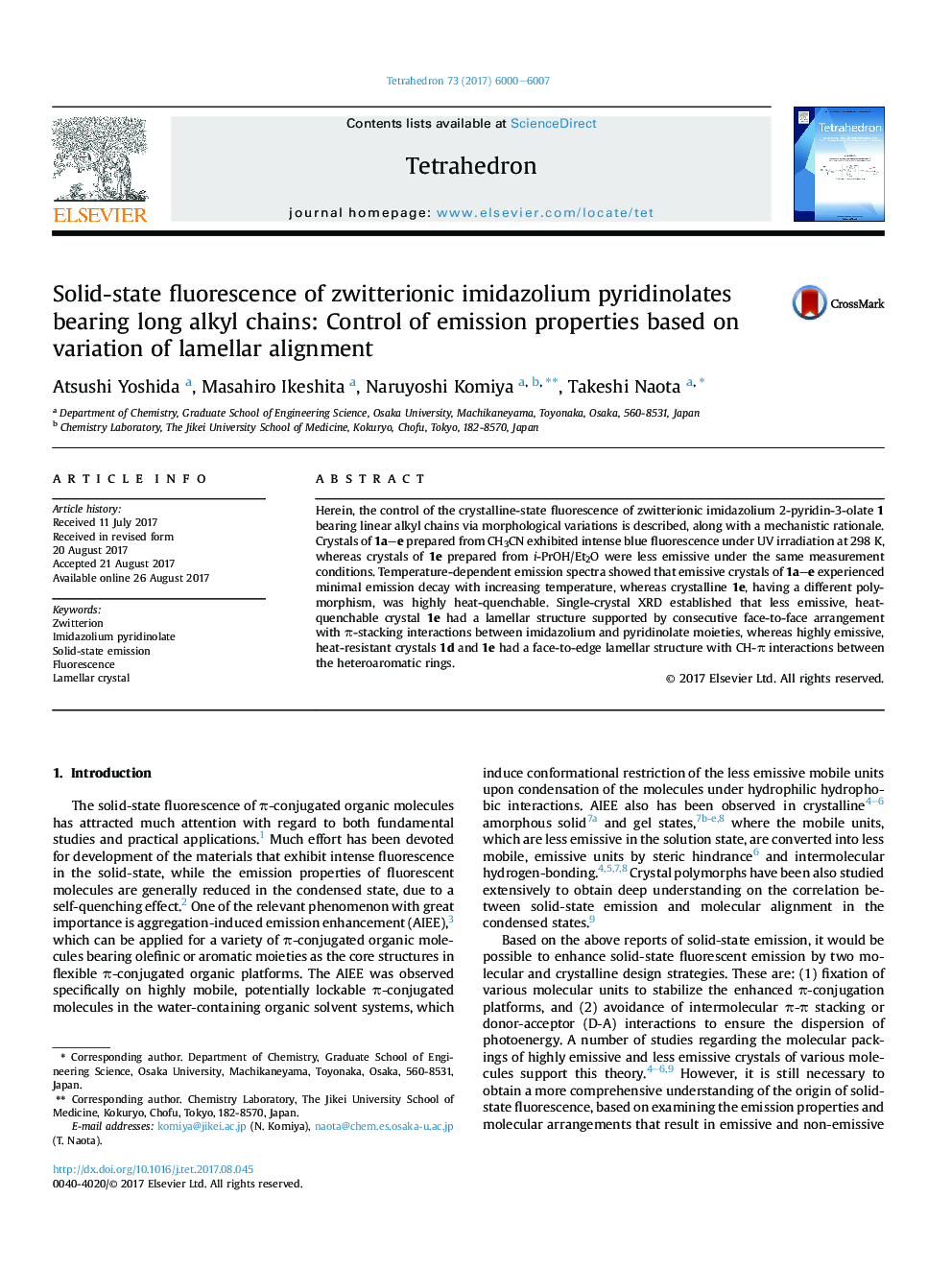| Article ID | Journal | Published Year | Pages | File Type |
|---|---|---|---|---|
| 5211885 | Tetrahedron | 2017 | 8 Pages |
Herein, the control of the crystalline-state fluorescence of zwitterionic imidazolium 2-pyridin-3-olate 1 bearing linear alkyl chains via morphological variations is described, along with a mechanistic rationale. Crystals of 1a–e prepared from CH3CN exhibited intense blue fluorescence under UV irradiation at 298 K, whereas crystals of 1e prepared from i-PrOH/Et2O were less emissive under the same measurement conditions. Temperature-dependent emission spectra showed that emissive crystals of 1a–e experienced minimal emission decay with increasing temperature, whereas crystalline 1e, having a different polymorphism, was highly heat-quenchable. Single-crystal XRD established that less emissive, heat-quenchable crystal 1e had a lamellar structure supported by consecutive face-to-face arrangement with π-stacking interactions between imidazolium and pyridinolate moieties, whereas highly emissive, heat-resistant crystals 1d and 1e had a face-to-edge lamellar structure with CH-π interactions between the heteroaromatic rings.
Graphical abstractFigure optionsDownload full-size imageDownload high-quality image (233 K)Download as PowerPoint slide
